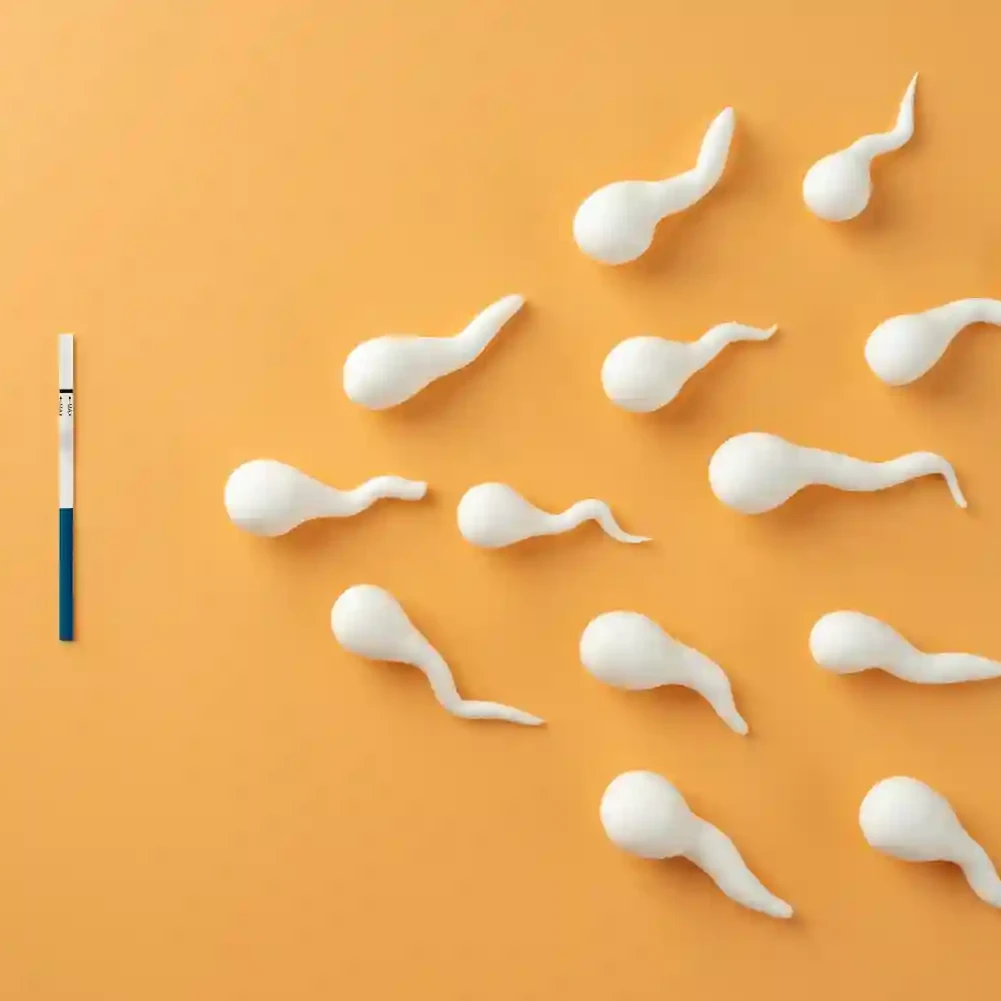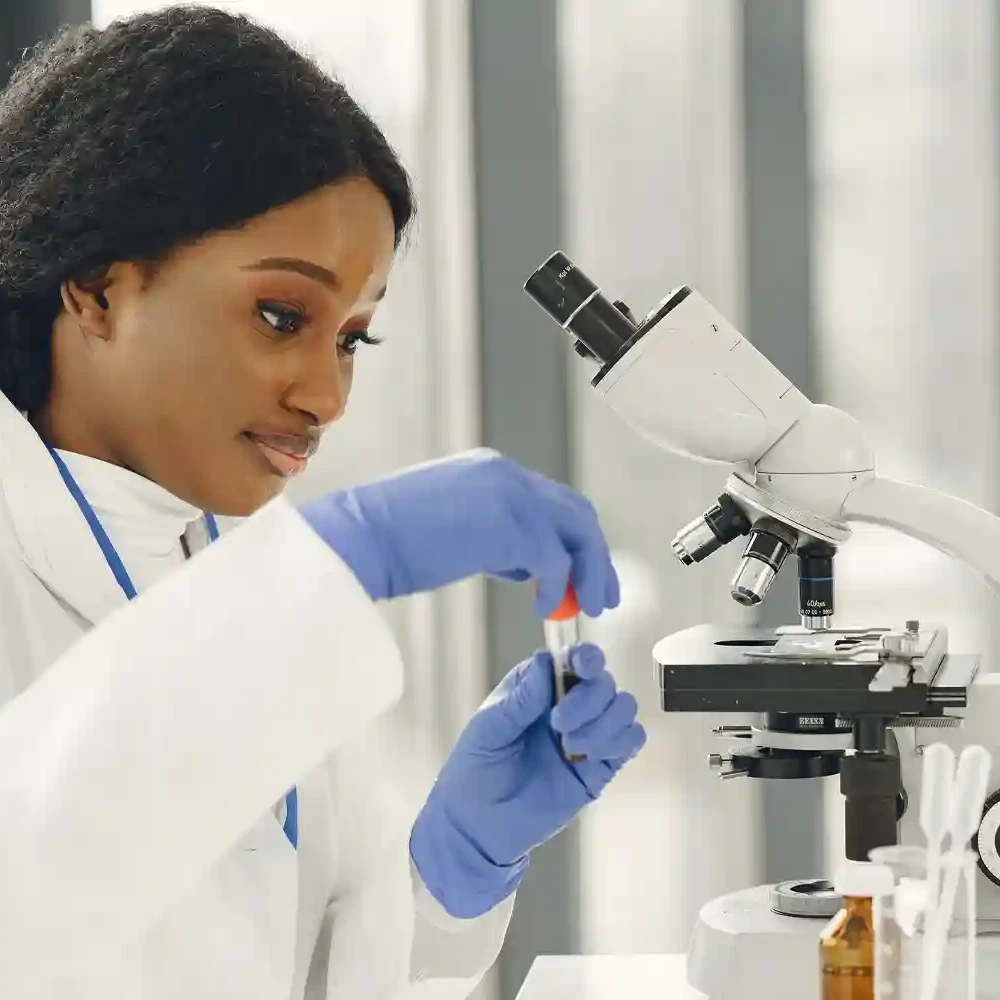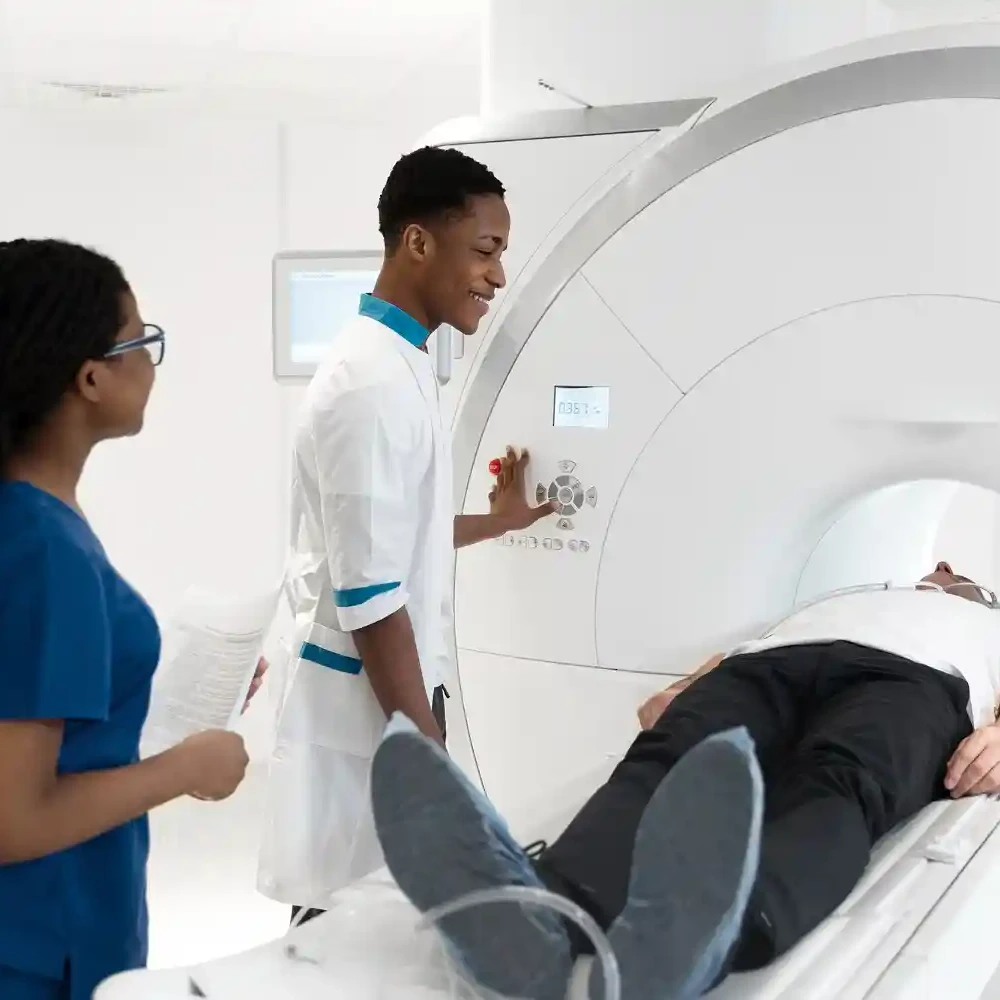Are you thinking of becoming a stem cell, bone marrow, or solid-organ donor?
Do you know a prospective donor or recipient?
Do you want to know the science behind cell and tissue transplantation?
And you have no idea how to go about it, what to know, or what to expect.
Worry no more.
In this article, I’ll tell you all about human leukocyte antigen (HLA), how HLA is inherited, what the testing entails, and what could go wrong.
If you are ready like I am, hop on, and let’s ride together!!!
Human leukocyte antigen
- The HLA system or complex is a group of related proteins or genes that are encoded by the Major Histocompatibility Complex [MHC] Gene complex in human
- The HLA complex of genes is located on the short arm of chromosome 6, which encodes proteins that are responsible for the regulation of the immune system and are attached to almost all of the cells in your body, except the red blood cells.
- The HLA is part of how your body recognizes which cells belong in your body and which do not.
- There are two general groups of HLA: HLA-A, HLA-B, and HLA-DR.
- There are many different specific HLA proteins within each of these three groups. (For example, there are 59 different HLA-A proteins, 118 different HLA-B proteins, and 124 different HLA-DR proteins.).
- Each of these HLAs has a different numerical designation; for example, you may have HLA-A1, while someone else might have HLA-A2.
How HLA works
You have read this far, but you aren’t so sure you understand how this whole HLA thing works.
I’ve got you covered.
Have you ever wondered how your body recognizes a foreign body and does away with it?
How can a little error in the workings of your immune system lead to a disastrous turn of events like rejecting a donated organ?
If you are ready, let’s keep going.
A word of caution: put on your imagination hat because you’ll be doing a lot of imagination.
Imagine your immune cell being a squishy ball.
This squishy ball has different colored strings floating off the surface.
These strings are your HLA proteins, and they are different colors.
We have green, yellow, blue, and red strings (you can choose your colors).

Now, if the squishy ball, which is your cell, notices another ball (a virus, for instance) with a color different from yours, let’s say a black or orange-colored string floating off its surface, a warning signal is immediately sent to your immune system.
Your immune system, in turn, sees this new ball as a potential threat and goes ahead to attack it.
The immune system is your body’s security agency that receives warning signals from all parts of your body when there’s a potential threat and is equipped to fight and neutralize such threats.
I hope you were able to visualize it.
In simpler terms, if your immune system perceives the donated cell or tissue as a potential threat (foreign body) after transplant, a warning signal is sent to your immune system, which in turn attacks and destroys the donated tissue.
Lymphocytes are white blood cells of leucocytes in the human immune system, consisting of B and T cells, which form antibodies for immunity, and natural killer cells that fight viruses and tumors.
How do you inherit the HLA gene?
Your guess is as good as mine.
Yes, the HLA gene is inherited from your parents.
Half are inherited from your mother and half from your father.
Now, there is a basic rule in HLA inheritance.
And no, it’s not like blood group (ABO), which is straightforward.
There’s a little twist to this one.
Remember, you inherited the gene from both parents, so if you have siblings, you have a
- 25% chance of having the same HLA type as any one of your siblings
- 25% chance of not having the same HLA type as any of your siblings
- And there is a 50% chance of having just one type with your siblings.
Confusing? Below is a pictorial explanation.

From the above, you can deduce that out of four siblings, you have just one identical match with a brother.
In simpler terms, if you have more than two siblings, there’s a 1 in 4 chance of being an identical match with one of them.
Everyone has their own pattern except for identical twins, who have the same pattern and are an identical match for tissue and blood cells.
It’s safe to say that matches are between close family members (related donors), so the search for a donor usually starts with a sibling unless, of course, you’re an only child.
I hope you’re still with me.
Or are you lost? Should I continue? Ok, let’s continue!!!
HLA testing
This genetic test identifies antigens on the surface of cells and tissues.
An antigen is any substance that causes your immune system to produce antibodies against it.
It is used to match a transplant recipient (person receiving a transplant) with a compatible donor (person who is giving their cells for a transplant) for a bone marrow, cord blood, or solid organ transplant.
What is the purpose of HLA testing?
Some people aren’t so sure why they need to go for HLA testing.
Some are like, Okay, I know what it is; I know about the floating strings, so what?
Well, there are several reasons why you need HLA testing.
They include;
- HLA testing is done to identify your pattern or type of antigens. This test determines if the recipient has antibodies to the potential donor.
- It is done to help determine the eligibility of donors as recipients.
- Testing may also be done to identify HLA antigen types in platelet blood donors that match transfusion recipients.
The more antibodies found, the higher the likelihood that a transplant will fail, and the greater the number of antigens that match, the more likely a transplant will succeed.
Who is eligible for HLA testing?
Do you want to know who is eligible for testing?
Or what makes a recipient perfect for a transplant?
- Transplant recipients are eligible for testing when it is determined that they need a solid organ or stem cell transplant.
- Before transplant, potential donors are tested and evaluated for compatibility with a specific recipient.
So, if you’re thinking of being a donor, you have to be tested and matched to a specific recipient to avoid cell or organ rejection.
This is a very critical process.
How is HLA testing carried out?
- Your and potential donors’ blood samples are taken by inserting a needle into a vein in your arm, or a buccal swab (i.e., a swab of cells taken from inside your cheek) can also be taken.
- The blood or cheek swab is tested in a specialized laboratory to figure out your HLA type.
- Your HLA type will be compared to potential donors to see if there’s a match.
- Your doctor will decide which donor has the best HLA match for you.
No special preparation is needed for either method.
And the transplanted cells or tissues must closely match those of the recipient.
Methods of HLA typing
There are several methods used in HLA typing, but it’s quite complex, so I’m not going to bore you with the details.
I’ll just list them:
- Serological method (micro-cytotoxicity)
- Cellular method (mixed lymphocyte reaction): rarely used
- The molecular method (polymerase chain reaction) is fast becoming the method of choice
Possible test result
The results from HLA testing will let the doctors know whether you’re a good match for a transplant or not.
The typing results of the recipient are compared to those of the potential donor.
Results indicate how many antigens match and how many mismatched antigens are present.
“0 mismatches” indicates a high probability that the organ or tissue will not be rejected by the recipient.
The absence of recipient HLA antibodies to the donor HLA antigens is very important.
Positive typing is a strong indication of a transplant.
It signifies that the patient can attack the donor’s cells and would most likely attack the donated cell or tissue.
Yeah, you can imagine that after going through the painful process of surgery, your body says a big no to the transplanted tissue.
And goes about destroying it.
Tragic! Matching a donor with a recipient who has developed antibodies must be carefully considered because the more HLA antibodies a person has developed, the higher the risk of rejection.
HLA sensitization
- Human leukocyte antigen (HLA) sensitization occurs when antibodies are present in the potential recipient against the HLA antigens of the selected donor.
- In other words, your body has developed a specific antibody to the HLA antigen. When this happens, you are said to be sensitized to the antigen. There’s bound to be a series of tissue rejections due to the sensitization of the antigens.
- The common causes of HLA-sensitizing cells include previous transplants, pregnancy, viral and bacterial infections, and blood transfusions. They can also develop spontaneously.4
HLA-sensitized patients may find it difficult to get an HLA-compatible graft, which will lead to an extended stay on the transplant list. Oh yes, there’s a list!!! Their presence is of particular importance in children, who are likely to need more than one transplant in their lifetime.
Conclusion
Human leukocyte antigen (HLA) antigens are substances, usually proteins, found on the surface of your cells (except your red blood cells), which bring about the production of antibodies.
- Each person’s HLA type is unique. You inherit it from your parents.
- If something foreign is introduced into your body, your immune system recognizes it and produces antibodies to attack and destroy it.
- In transplantation, your body will recognize the HLA antigens on the transplanted cell or organ as not being the same as your own and therefore produce specific antibodies against your HLA antigens.
- A close match between a donor’s and a recipient’s HLA markers is essential for a successful transplant outcome.
- HLA matching promotes the growth and development of new healthy blood cells (called engraftment) and reduces the risk of a post-transplant complication called graft-versus-host (GVH) disease.
- As a potential donor, you know how important HLA testing is. So, go get tested now!
In the comments section, share with me any stories about HLA testing that you’ve heard about. I want to know!
Harriet Akpeokhai
Harriet is an avid reader, a music buff who doubles as a Medical Laboratory Scientist and baker. She writes daily on her WhatsApp status, where she shares simple everyday medical advice to her long list of friends, family and acquaintances.
Aside reading books, Harriet loves listening to music, having intelligent conversations with people, cooking as well as eating well prepared meals, social networking and travelling.
She believes that “good health cannot be overemphasized”.



